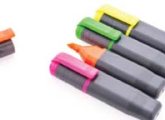If you regularly find yourself wishing there were more than 24 hours in a day, Philippa Seago’s tips on getting organised could be just what you need…
It’s no secret that teachers have a long working week, but usually only around half of that time is spent teaching. Alongside all those lessons we deliver there are hours of planning and marking - as well as all the admin such as filing, answering emails, chasing missing work or analysing results. While we haven’t yet found a way to stretch time, there are ways to become more efficient, especially when it comes to those time-consuming administrative tasks. And if we can plan and organise our time better, we can save it for the important things. Here are four ways we could all be better organised this year…
1. Map your year
A teacher’s year is a series of deadlines, commitments and special events. They are not spread evenly across the months, so neither is our workload. By spending a little time mapping out all of these requirements across the year on a spreadsheet, it is easier to anticipate where the focus has to be and move other work (where possible) in order to avoid overload as far as possible. For example, it should be easy to spot where Year 11 mock exams need marking and make sure that there isn’t another class handing work in to be marked at the same time, or to avoid trying to write a set of reports while marking controlled assessments. The simplest method for mapping the year is to make a table, allowing one column for each different year group and one row per half term to record the topics taught, important assessments and diary dates relevant to that year group. More in-depth spreadsheets allowing monthly or weekly rows can help to give an even clearer picture.
2. Perfect planning requires a personal planner
A planner is the key to organisation, but, like any tool, it is only as good as the way it is used. Although some teachers use a range of diaries, online calendars, planners and wallcharts, the fewer different ones used the better, to avoid confusion. It is also important that the main planner is portable and adapted to specifically meet the needs of an individual teacher’s role. Any planner is likely to need a school diary, timetable, lesson plans and registers or mark books, but may also include extra information, such as schemes of work, records of meetings, parents’ evening appointment lists, pupil information, marking criteria, to-do lists and other important information or spare sheets. This might sometimes be a temporarily addition, while it is relevant, and using a ring binder, rather than a bound planner, can help to ensure that extra information can be added easily.
3. Wake up and smell the routine
As teachers, we are used to structure and routines in the classroom, but it is vital that we continue to have these during non-contact time. A daily plan can help by including space for before and after school time (depending on when you choose to work) as well as lessons during the school day. For example, allocating time at the start of the day to check emails prevents them from eating into time allocated to lesson planning or marking, as we know they will be done later. Build on this with specific routines for the start and end of the day, to avoid wasting those times, such as leaving out sheets at the end of the day which need photocopying, so that they are picked up first thing in the morning and copied. Routines such as this make for a calmer start to the day and allow us to leave having set up for tomorrow.
4. Expect the unexpected
However organised we try to be, there will be times when pupils or staff are absent, which often throws up a number of admin tasks - but there are systems that can come to the rescue when the unexpected occurs. When pupils miss lessons, particularly in exam classes, nominate another classmate to jot down on a sheet of paper what the lesson was on and any homework they have missed, attach it to any worksheets used and write the pupil’s name on top to hand to them in the next lesson. Keep a few copies of all the sheets or books handed out in the first lessons as a ‘new pupil pack’ to hand to those pupils who join classes halfway through the year, to minimise disruption when they do appear. One straightforward way to deal with having to set cover work is to set up a specific folder with copies of your class lists (and seating plans or photos if you have them), so that they don’t have to be copied or printed every time when setting cover. It is also a good idea to keep a copy of cover work to be used again – especially if school trips or exam commitments mean that you often have to set cover at the same time of year.
About the author
Philippa Seago has ten years experience of teaching psychology and RE. Currently, she is teacher in charge of psychology at an outstanding community school in Littleover, Derby. She is also a blogger and author.











Here are four ways we could all be better organised this year…